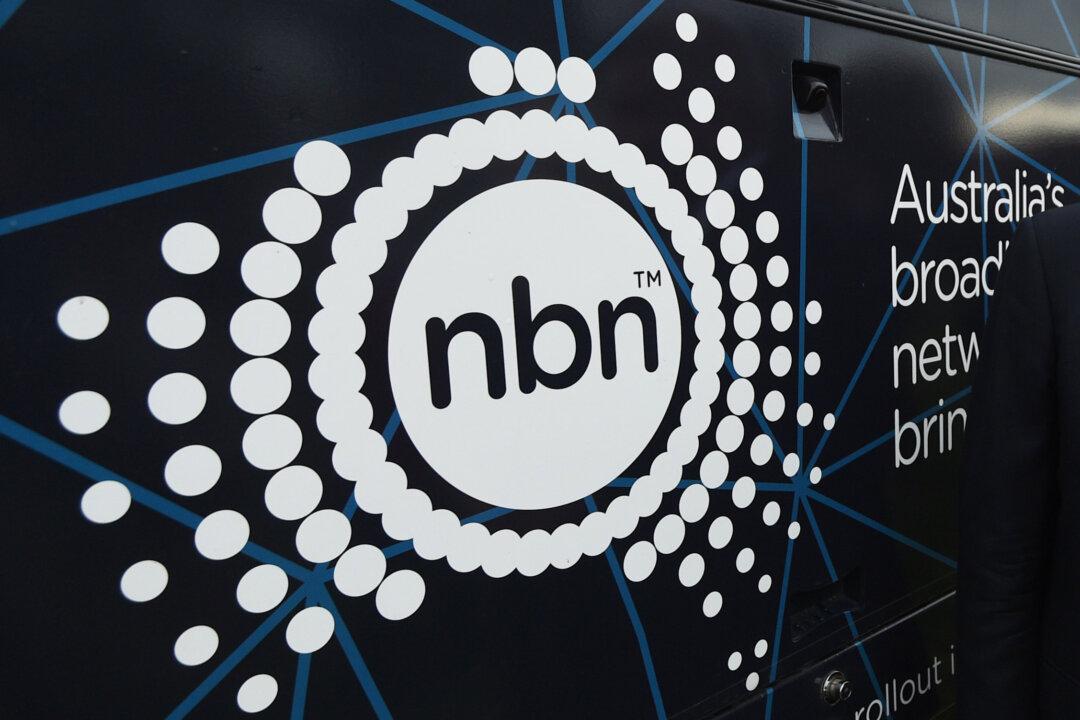The Albanese Labor government’s announcement of a $3 billion funding boost to complete the National Broadband Network (NBN) has reignited debate over the network’s usefulness, financial sustainability, and relevance.
Prime Minister Anthony Albanese said the $3 billion would deliver faster internet to 620,000 homes and businesses, with a focus on regional areas.
Doubts remain about the 15-year-old NBN’s future amid the advent of 5G and satellite internet services, and the state-owned company’s ongoing losses.
The NBN was a major undertaking conceived and launched by the Rudd Labor government in 2009, and was supposed to link fibre optic cables across the Australian landmass to 98 percent of homes and premises, to replace the existing copper network.
This plan was scaled back under the Turnbull Coalition government as the rollout ran into difficulties. Instead, the Liberal-National Coalition adopted a “fibre to the node” (FTTN) system linking fibre optic to central “nodes” that would then connect to households via copper.
Calls to Privatise the NBN: Think Tank
Graham Young, executive director of the Australian Institute for Progress, criticised the latest initiative as “good money after bad,” pointing to persistent losses.“Despite having a near monopoly on the domestic backbone for the Internet, the NBN makes a loss each year. Last year, it was $1.176 billion, up from $1.190 billion the year before,” Young told The Epoch Times.
He argues the private sector could have delivered a more efficient solution at a lower cost.
Young also raised concerns with the NBN’s obsolescence in the face of emerging technologies like 5G and satellite services, noting privatisation was the only way to salvage the network.
Some Believe Privatisation Is Not the Way
The government has underscored the importance of the NBN as a publicly-owned asset.Communications Minister Michelle Rowland highlighted risks associated with foreign-owned alternatives like Elon Musk’s Starlink, including data security and sovereign risks. Starlink is based in the United States, a close ally to Australia.
“We want to make sure Australians continue to have access to reliable, affordable broadband,” Rowland said, noting that the NBN expansion would make the Australian system more attractive to consumers in regional areas.
Analyst Paul Budde warned against privatisation, citing financial pressures in the telecommunications sector and the dominance of large digital companies that profit from existing infrastructure without contributing to its maintenance.
Government Obligated to Build Infrastructure: Economist
Independent economist Saul Eslake framed the latest funding pledge as part of the government’s ongoing equity contribution to the NBN, which now totals $30.5 billion.This is on top of previously repaid loans of $19.5 billion.
“Since its establishment, NBN Co. has accumulated losses totalling just over $35 billion without ever paying a dividend to the government,” Eslake told The Epoch Times.
While acknowledging the financial burden, Eslake said the government also had a responsibility to ensure equitable access to high-speed internet to the population, particularly in regional areas.
NBN Essential for Digital Economy: Experts
The NBN’s satellite service, Sky Muster, is currently losing to Starlink’s offering with the Elon Musk-owned company servicing 200,000 customers locally.Starlink also provides internet at a faster rate with peak speeds of 470 Mbps for downloads compared to NBN’s 11 Mbps, according to the ACCC.
Telecommunications expert Wibowo Hardjawana argued that a fibre-based NBN could outperform Starlink in reliability and cost-effectiveness if fully extended to regional areas.
Hardjawana noted that Starlink’s higher costs could make NBN a preferable option for many users.
Meanwhile, Budde said the NBN was important to support Australia’s digital economy, noting high-quality broadband was essential for education, businesses, and healthcare.
“Without proper digital infrastructure, you can’t run a digital economy,” Budde asserted.
NBN Co-Chief Executive Ellie Sweeney positioned the upgrades as the “final piece of the puzzle,” asserting that they would meet future online needs.







